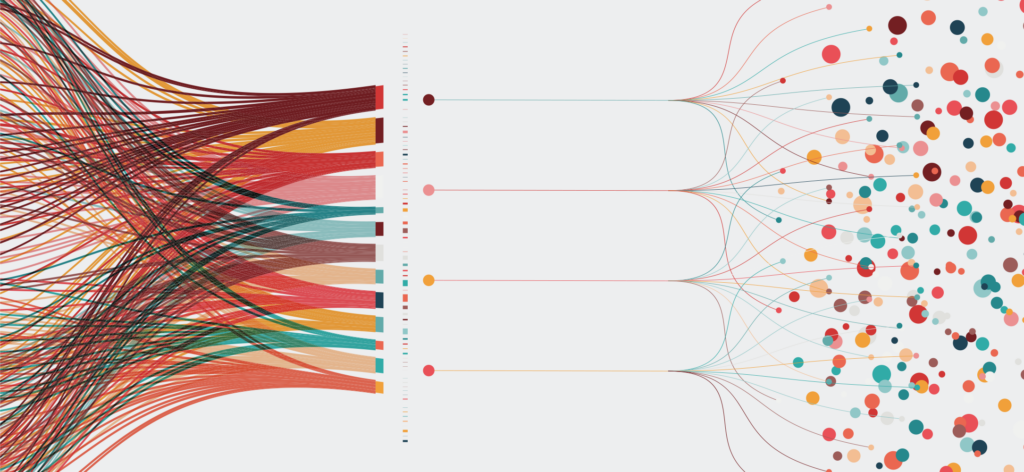Customers are at the very top of every business’s priority list, making data about their behaviors, preferences, and challenges a critical asset when harnessed and leveraged appropriately. Today, it has reached a point where virtually all businesses rely on this knowledge to connect with their customers and effectively create and navigate sales and marketing strategies.
Luckily over the past few years customer data management technology solutions have advanced considerably, and now there is an abundance of Customer Data Platforms (CDPs) designed to collect, manage, and analyze all our customer data gathered from diverse channels, creating one centralized database for all departments to utilize for their own use-cases.
In the sales world, customer data is the key to crafting meaningful, hyper-personalized outreach to all potential and existing buyers in order to create, nurture, and maintain long-lasting connections. And such tailored outreach is not just a neat sales strategy but an absolute necessity for any company wishing to meet modern buyers’ high expectations and, ultimately – to survive.
Check out the new 2025 Gartner Critical Capabilities for Customer Data Platforms, courtesy of Treasure Data.
How Sales Teams Leverage Customer Data To Personalize Outreach
Thanks to the rapid rise of CDPs, sales teams no longer have to spend countless hours gathering and making sense of customer data. However, it is their prime duty to properly leverage that data to create individualized outreach campaigns.
This effort is well worth it, given that personalized outreach is the most effective way to connect with customers on a deeper level to build a loyal customer base and a reliable revenue stream.
Following are the 3 ways customer data helps sales teams hyper-personalize their outreach.
- Identifying The Best Outreach Strategy
I believe that the very first step of every tailored sales outreach is accurate targeting and has nothing to do with the outreach itself. Simply because even the most well-crafted, personalized sales email will never be effective when reaching out to the wrong people.
Analyzing existing customer data gives businesses a clear overview of their ideal customer profile (ICP), in other words – the most common characteristics of prospects with the highest chance of making a purchase.
With their predictive scoring features, CDPs can then help sales teams swiftly qualify the most suitable leads to engage by comparing their derived profiles against the ICP. Afterward, sales teams will segment their entire customer base into separate customer personas united by similar demographics, behaviors, purchase histories, or other notable features.
Further analyzing each customer segment will bring to light the most effective outreach strategy sales teams should use for each case, identifying:
- the most effective & preferred channels;
- the most effective way to deliver the value proposition;
- the best number of touchpoints before going for the sale, and so on.
This empowers sales teams to begin crafting the most objectively effective outreach pathways tailored to each unique customer group. Meanwhile, all new potential customers will be automatically assigned to the most appropriate group for the first stage of personalization to begin.
Taking it a step further, leveraging customer data can help sales teams decentralize buyer segments to an individual level, where each customer has their own sales approach based on their personal data attributes.
While such account-based selling may seem complicated at first glance, modern CDPs paired with AI can skim through tons of data and create detailed, hyper-personalized single customer view (SCV) profiles in seconds. AI sales assistants can then analyze those profiles to create the most optimal multichannel outreach sequence.
After qualifying and segmenting customers into separate groups with the most effective outreach strategy in place, sales teams can double down on personalization by tweaking each individual engagement plan based on their unique customer data points, such as personal hobbies or achievements.
- Crafting The Best Messages
After creating the best engagement strategies for each buyer segment, sales teams can now fully focus on personalizing their outreach to provide value with every email and message they send.
So, besides having a tailored outreach strategy designed for their buyer persona, customers will also get the most relevant and personalized messages speaking to their individual pain points and topics of interest.
This is especially relevant in the B2B space, as sales reps rarely go for the pitch in the first or even second email. As a matter of fact, it takes on average 8 touches before a customer books a meeting.
To keep prospects engaged throughout those lengthy outreach journeys, sales reps ensure each touchpoint carries at least some personalized value to each customer to establish trust and rapport.
Customer data sets can help with that by revealing what triggered each customer’s initial engagement, which ads they interacted with most, and what content they spent most time reading. This hands sales teams a blueprint for each prospect’s business on a silver platter, which includes what gets their attention, the challenges they face, and how your product can be of value to them.
The results are impressive. Sales reps get to keep each touchpoint personalized with the help of CDPs analyzing and updating all that customer data in real-time. Then, whether it’s an email with a relevant article, report, or some niche case study, your customers will greatly appreciate the effort you put into catering to their needs with constant personalized messaging.
Coming back to the topic of AI, customer data fuels virtual AI assistants. With enough relevant data on each prospect they can generate hyper-personalized, top-quality outreach in seconds, being close to impossible to tell that it wasn’t written by a human.
With dedicated sales engagement platforms, this outreach process can then be mass-scaled to hundreds or thousands of customers while preserving the high level of personalization in each message.
- Reaching Out At The Best Time
Believe it or not, in many instances, the timing of sales or marketing outreach is just as important as the message itself.
For the modern business, the dynamic of the average buyer journey has changed dramatically. Most customers now prefer no help from sales reps when researching and learning about products, at least in the first stages. They do it themselves digitally.
So, it’s crucial for sales teams to keep their customer data flowing in real-time to know exactly where each customer is in their customer journey and determine the best time to reach out, follow up, and invite them to a short demo call.
Not bombarding leads with follow-ups when they’re just browsing their options, yet sending that message the moment they show signs of purchase intent provides its own type of personalization. It shows potential customers they are looked out for, and your mission is to assist them rather than ‘close’ them at any cost.
For instance, CDPs can alert sales reps in real-time when certain leads have just signed up for a trial or spent ‘X’ hours reading your blog’s product-related content. This will be the green light for sales reps to get in the action and start talking business.
Some of the top CDPs also pack a really cool, AI-powered feature known as the ‘next-best action’, which basically produces the most optimal upcoming day/time and message for outreach to help drive conversions.
Timing is equally important when it comes to existing customers. By paying attention to customers’ product usage data, businesses can anticipate any potential issues and provide timely solutions, building more trust and loyalty for future customer retention rates.
Similarly, sales teams can leverage behavioral customer data to identify tailored upsell & cross-sell outreach opportunities. One of the most common examples in the SaaS industry is re-engaging customers with plan upgrade options and personalized discounts the moment their number of users begins significantly growing, leaving the business potentially needing more functionality.
Over To You
Customer data and CDPs have changed the sales game. Modern, data-driven businesses use them to create a cohesive bridge between businesses and customers through meaningful connections and hyper-personalized outreach.
Sales teams that take the time to understand and accurately leverage their existing customer data will provide that A-class service built on personalization, which entices potential buyers to give their product a shot and existing ones to stick around for the long run.
Moving forward, customer data will only play an even busier role in sales and marketing teams of all kinds of industries because in our modern market economy – personalized customer journeys and engagement take the crown.



